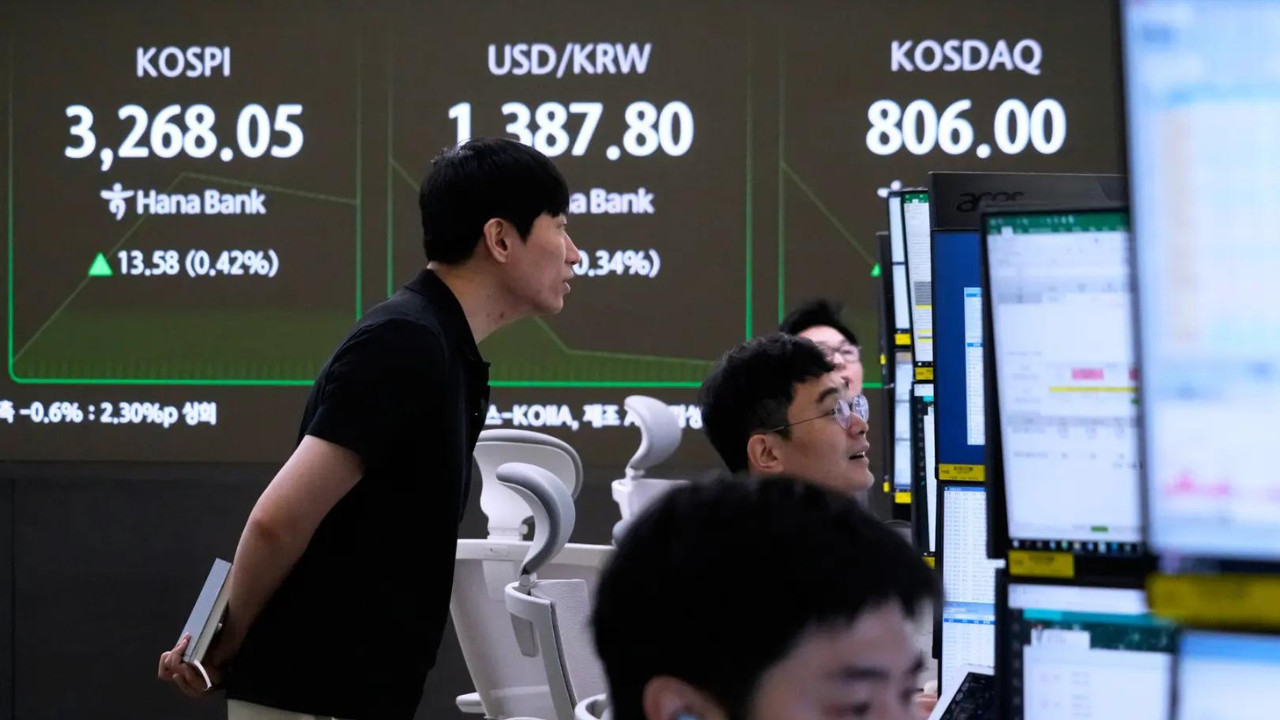Asian stocks experienced gains, led by Japan’s Nikkei reaching a record high, following the US-China tariff truce extension. This eased trade tensions and stabilised oil prices. Australia’s index also hit a record high amid expectations of interest rate cuts. Investors are now focused on upcoming US consumer price inflation data and its potential impact on Federal Reserve rate cut expectations.
A Breath of Fresh Air: How US-China Thaw Sent Asian Markets Soaring
The mood across Asian markets this week? Optimistic, to say the least. A palpable sense of relief washed over trading floors as news trickled in about a potential easing of trade tensions between the United States and China. The financial world collectively exhaled, and the resulting surge propelled stocks and crude oil prices upwards. It felt like a long-awaited sunshine break after a prolonged period of economic uncertainty.
For months, the ongoing trade dispute between the world’s two largest economies has cast a long shadow, creating ripples of anxiety felt across global markets. The threat of escalating tariffs and retaliatory measures had investors on edge, constantly anticipating the next economic blow. But now, whispers of constructive dialogue have ignited a spark of hope that a more stable and predictable economic landscape might actually be on the horizon.
Riding the Wave: Which Markets Benefited Most?
The positive sentiment resonated throughout the region, with several key markets experiencing significant gains. Hong Kong’s Hang Seng Index enjoyed a notable upswing, reflecting its sensitivity to developments in mainland China. Similarly, stock exchanges in South Korea and Taiwan, both heavily reliant on international trade, saw a considerable boost. The ripple effect even reached Southeast Asian markets, including Singapore and Jakarta, where investors reacted positively to the prospect of improved global trade flows. The gains weren’t uniform, of course. But the overarching theme was one of cautious optimism.

The rising tide of market sentiment also lifted crude oil prices. With renewed confidence in global economic growth, the demand for oil is expected to increase, further contributing to the upward trajectory. It’s a delicate balance, though. Supply chain disruptions and geopolitical instability can easily send prices tumbling again.
Decoding the Dialogue: What’s Behind the Shift?
What exactly fueled this sudden surge in market confidence? Behind the scenes, diplomatic efforts appear to be gaining traction. There’s increasing speculation about high-level discussions aimed at de-escalating the trade war. The exact details remain shrouded in secrecy, but the mere suggestion of a potential breakthrough has been enough to send positive signals to investors.
It’s important to remember that the road to a comprehensive resolution is likely to be long and winding. There are deeply entrenched differences between the US and China on issues ranging from intellectual property rights to market access. Resolving these complex challenges will require sustained dialogue, compromise, and a willingness to find common ground. However, this initial positive movement is a step in the right direction.
Navigating Uncertainty: A Cautious Approach
While the recent market upswing is encouraging, it’s crucial to exercise caution. The global economic outlook remains uncertain. Inflationary pressures, rising interest rates, and geopolitical risks continue to loom large. A single tweet or unexpected policy shift could quickly derail the fragile optimism that currently prevails.
Investors would do well to adopt a balanced and diversified approach, carefully assessing their risk tolerance and focusing on long-term value creation. Seeking expert financial advice and staying informed about global economic developments are more important than ever in these times of uncertainty.
For more on navigating complex market conditions, see our recent post on [investment strategies for volatile times](internal-link-to-investment-strategies).
The Path Ahead: Monitoring Key Indicators
As we move forward, several key indicators will provide valuable insights into the sustainability of this positive trend. Keep a close eye on upcoming economic data releases, particularly those related to trade, manufacturing, and inflation. Also, pay close attention to any official announcements or statements from both the US and Chinese governments regarding the ongoing trade negotiations. Monitoring these factors will allow for a more informed perspective on the future trajectory of the markets.
The US-China relationship is a crucial factor. Any improvement or deterioration in the relationship between these two powerhouses will have a significant effect. It’s important to watch not only direct trade policies but also the broader geopolitical context.
The recent surge in Asian markets demonstrates the profound impact that trade relations can have on global financial stability. While challenges undoubtedly remain, this glimmer of hope offers a welcome respite from the prevailing economic gloom. This development is something to follow closely, and a good reminder of the importance of staying informed and adaptable in today’s rapidly changing financial landscape.







